Fatsia Japonica - Care Guide, Propagation, Pests, Problems
Fatsia japonica is a plant of a mysterious name, and a perfect addition to every interior. It's not a difficult species, so even beginner gardeners and houseplant enthusiasts should be able to take care of it. The plant is related to ivy and schefflera. Its relatively fast yearly growth rate is noteworthy, thanks to which it reaches an impressive size in short time. Check what you should know about fatsia japonica and how to take care of it.
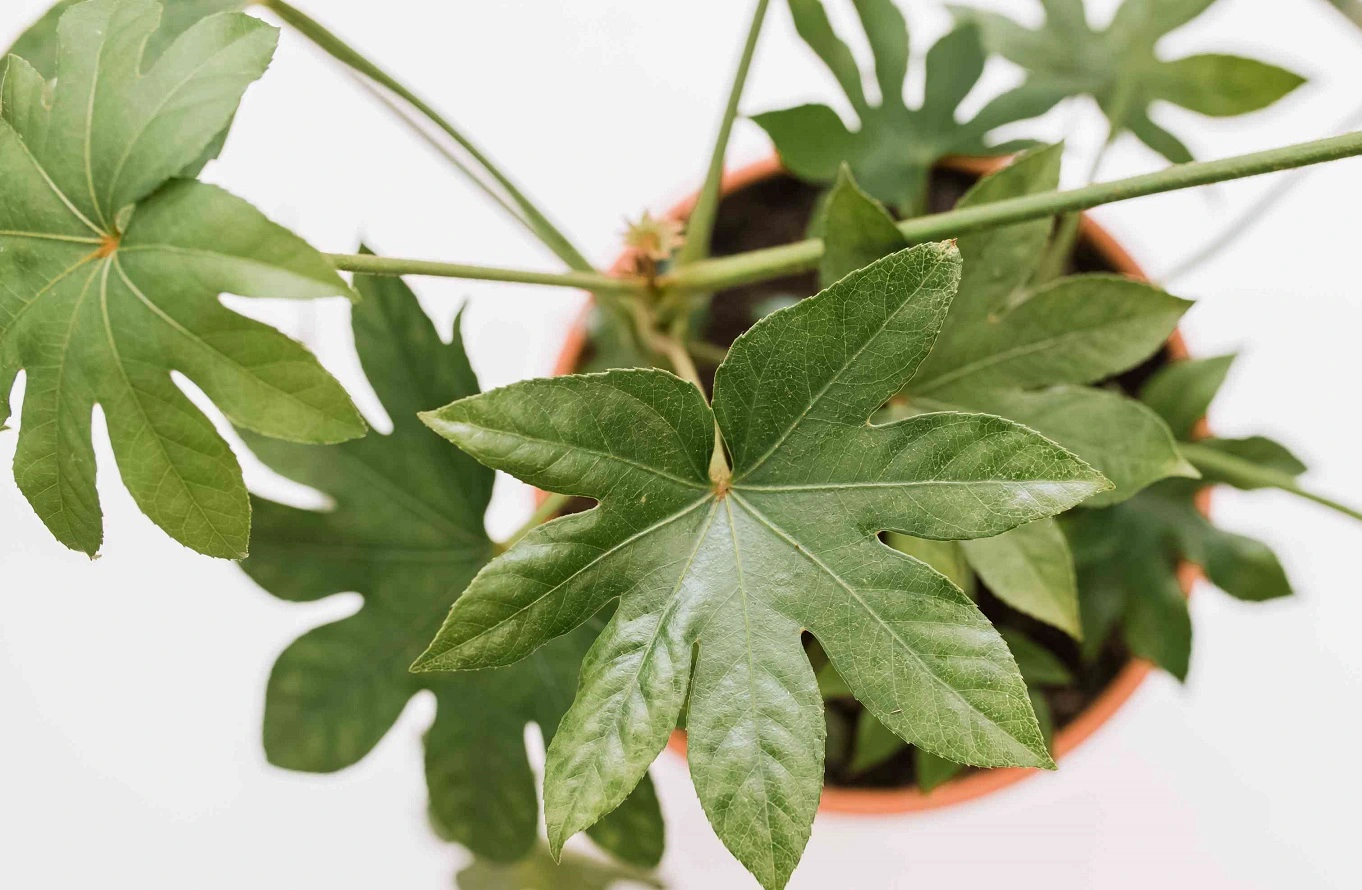
Fatsia japonica – origins and characteristics
Fatsia japonica, also known as paper plant is an evergreen plant. As the name indicates, it’s native to Japan, where it can be encountered in its natural environment. As a bush of that region, it can grow up to 5 m (ca. 16 ft) tall. In Europe, fatsia is cultivated as an ornamental houseplant that grows up to 1.5 meters (ca. 5 ft) tall and about 40 cm (15.7 in) wide.
An experienced gardener can also plant fatsia in the garden. In such conditions, the plant grows up to 2 m (ca. 6.5 ft) tall.
In the original region, the plant develops cream flowers. After blooming, dark berry-like fruits appear in their place. Fatsia doesn’t bloom in colder climates such as Europe, so the leaves are its main decorative aspect.
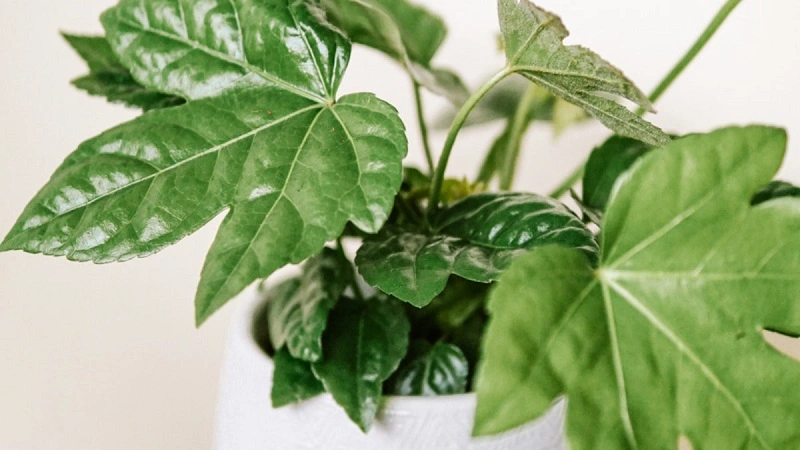
Fatsia japonica – popular varieties
Fatsia japonica is a relatively popular houseplant. It has several cultivars. Two varieties are particularly interesting. They are:
- fatsia ‘Variegata’ – its leaves have creamy edges, and the plant doesn’t grow very tall, which makes it easier to take care of,
- fatsia ‘Spider’s Web’ – the main decoration are the leaves with tiny hair that resemble a spider web.

Fatsia japonica – cultivation and basic needs of the plant
Fatsia japonica is very easy to grow. It doesn’t have any special needs about its location. It can grow even in dark shade. Regardless, it grows best in a place with dispersed light. Varieties with colored leaves need plenty of indirect light. But make sure to avoid exposing the plant to direct sun. It might cause burns on the leaves.
The plant dislikes overheating, so it’s particularly prone to wilting in winter, if it’s placed close to radiators. To make sure it grows in optimal conditions, move fatsia away from the heat source. Otherwise, the leaves might get dry. You can mitigate it by misting them or leaving a container with water nearby, so they get naturally moisturized.
The plant doesn’t need any special soil, either. A standard potting mix for houseplants is a perfect option. Just make sure it’s always moist – regular watering is important.
Fatsia japonica can also be grown in the garden. But in this case, the plant requires more attention. Fatsia tolerates temperatures no lower than -7°C (19.4°F). If they drop lower, the plant needs to be protected with a textile, so it doesn’t freeze.
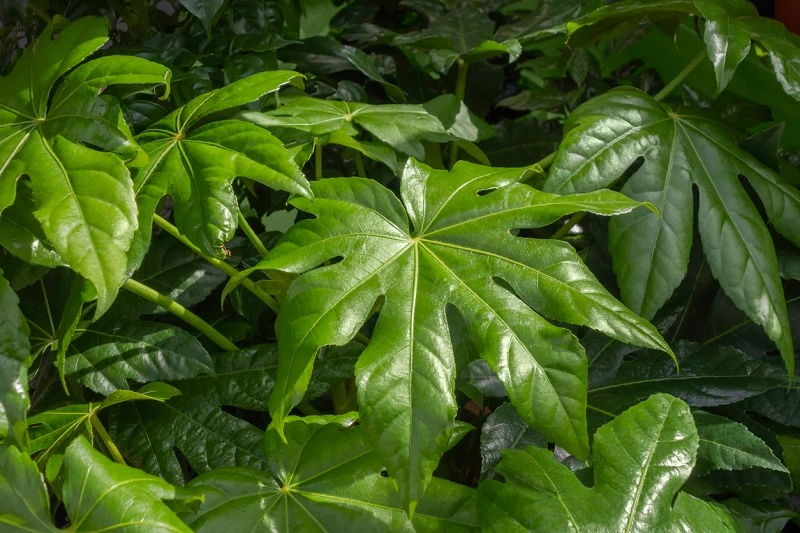
Does fatsia japonica need regular watering?
Fatsia japonica requires constantly wet soil. But note that too moist soil is equally harmful as overly dry one. The plant needs regular watering from April to the end of August – two times per week. Make sure to check if the top 1-2 cm layer of the soil is dry.
When the plant goes dormant from September to March, limit watering to once a week. You can still mist the leaves, though.
Fatsia japonica – fertilizer
Paper plant requires fertilizing during the period of activity, so from the beginning of April until the end of August. Feed it with fertilizer designed for green plants once every 2 weeks. You can purchase the right product in a garden store. They are available in different forms. Fertilizer sticks are very easy to use, so many plant enthusiasts who love convenience pick this very method.
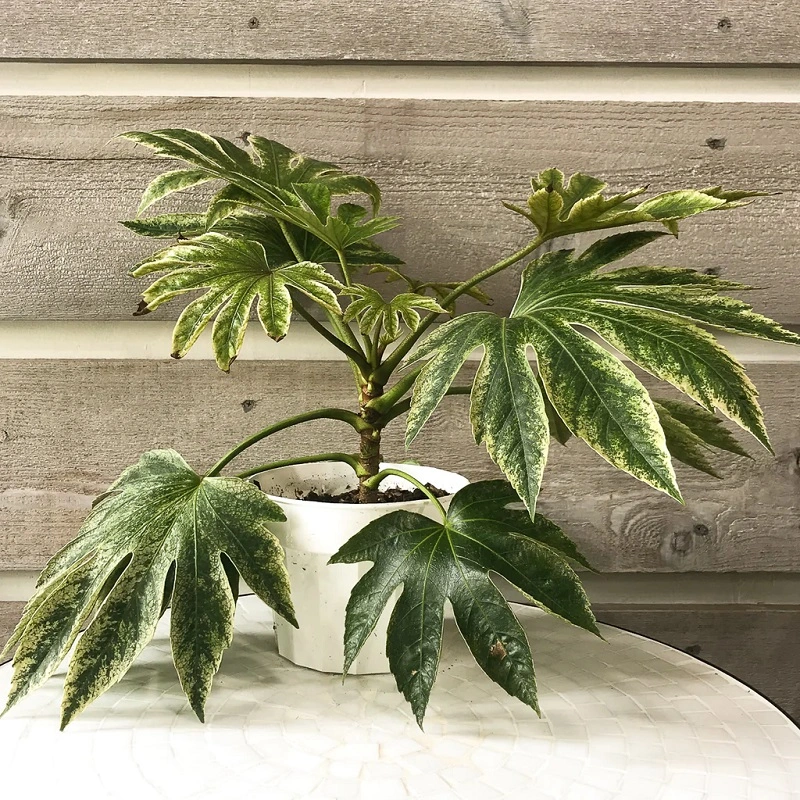
Is fatsia japonica poisonous?
Fatsia japonica is a poisonous plant. In European conditions, despite the lack of fruits, it can still be dangerous to both humans and pets. It’s particularly harmful to small children. Anything concerning its care should be done wearing gloves. This way, you can avoid its harmful effects. Make sure to place the plant in a location that is inaccessible to children, cats, and dogs.
Fatsia japonica – propagation
Fatsia japonica can be easily propagated in domestic conditions. Simply use cuttings of the length at least 10 cm. Remove the bottom leaves from the cutting, and put it in a rooting hormone. As it developing roots, you can move it to a container.
The best soil for paper plant propagation is a mixture of peat and sand. The cutting should remain in such soil at least 3 weeks, until its roots are strong and developed enough. After this time, you can move the new plant to its proper pot.
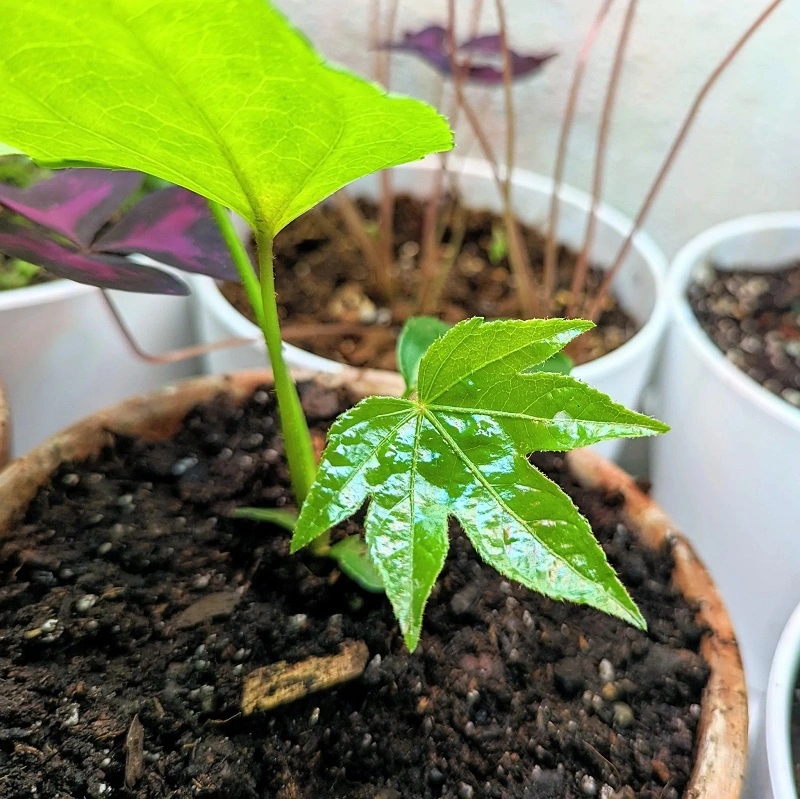
Is fatsia japonica vulnerable to pests and diseases?
Improper care of the plant is the most common reason of any problems. Usually, it involves placing the paperplant in full sun, not watering it enough, or overwatering the soil. If you make sure to care for the fatsia correctly again, the plant will be healthy again.
As for diseases, Pythium ultimum is the biggest threat to the plant. Because of it, the leaves turn yellow at the bottom, and then wilt and die. After taking the plant out of its pot, you might notice characteristic rot on the roots. The disease is caused by high temperatures remaining at 25-28°C (77-82°F) and too wet soil. You can try saving the infected plant using an antifungal product purchased in a garden store.
As for the pests that might attack fatsia japonica, spider mites, aphids, and thrips are the most popular. But these insects can be easily removed using adequate insecticides from a garden store.
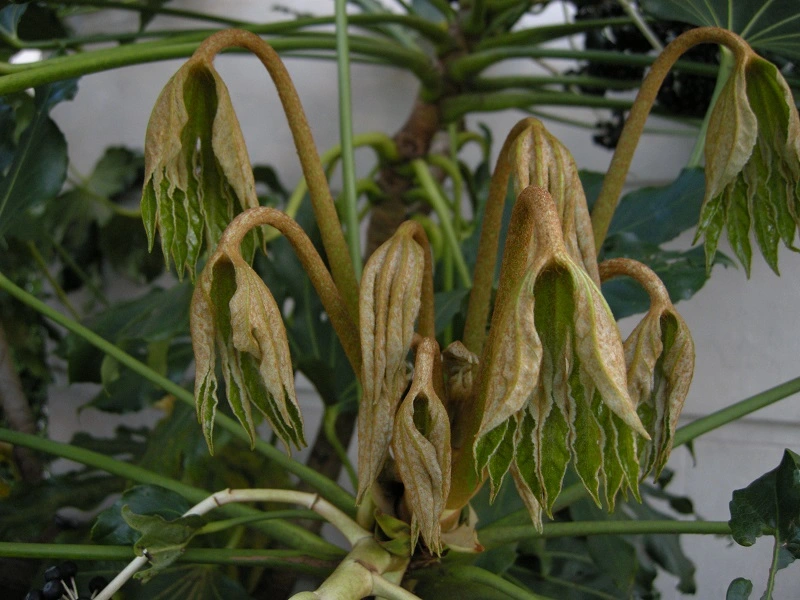
📍 What does fatsia japonica look like?
Fatsia japonica is a very tall bush in its natural habitat. When grown at home, it's treated as a houseplant that grows up to 1.5 m tall. It has a raised habit with many branches. Its leaves are green and shiny.
📍 How to care for fatsia japonica?
Fatsia japonica is not a difficult plant even for beginner gardeners. It requires regular watering, but avoid overwatering the soil. Also, make sure to protect it from dry air in winter – place a container with water nearby, so it gets properly moisturized.
📍 What is the best soil for fatsia japonica?
If you want to plant fatsia japonica, use regular potting mix for houseplants. Remember that the soil in the pot should always be moderately wet. Lack of moisture is very dangerous to the plant. Overly dry soil might cause dry and dying leaves.
📍 How fast does fatsia japonica grow?
Fatsia japonica can reach its maximum height in a relatively short time. In domestic conditions, it grows up to 1.5 m tall. The plant can increase even by 30 cm per year. Note that it's possible only if the plant is provided with the best conditions.
Featured articles




